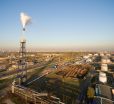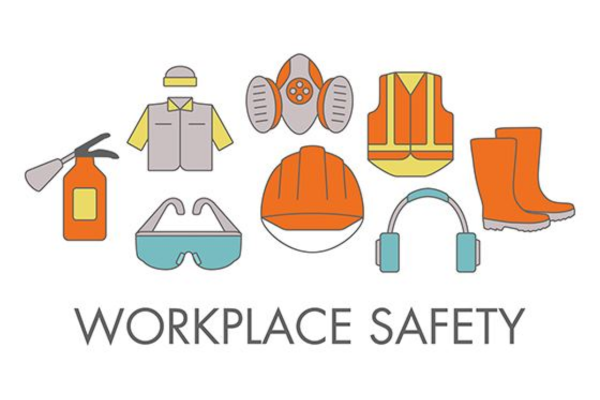AI is changing the way companies work now. The industrial landscape is hanging fast. In sync, the safety tactics and operating strategies care changing big time. Meanwhile, workplaces are becoming smarter than ever.
When it comes to workplace safety, data analytics plays a key role. The AI-built data analytics tools can forecast risks and improve the organizational safety protocols. You can now generate AI-based insights to discover potential hazards.
It may also enhance the safety protocols. Meanwhile, data analytics can also unearth loopholes in the current safety procedures. The bottom line is that you can now prevent accidents before they occur.
Vivid Use of Data Analytics in Workplace Safety
AI-powered data analytics has a lot of organizational roles to play. However, it plays the best part when it comes to predicting workplace hazards. Meanwhile, AI-based data analytics allow you to comply with a lot of other factors and map real-time statuses. Hence, you can sense impending
For example, data analytics can calculate empirical data of machinery to track when it might show signs of malfunctioning. Predictive analytics for workplace safety is thus opening up a new horizon of real time risk management strategy in organizations.
Let’s take the example of conveyor belts. For Workforce Safety Data Analytics is unparalleled, especially when it comes to conveyor belt operations. It is a device that can fail frequently, leading to random critical errors. It also exposes the workers to a lot of physical risks. That’s where you need risk assessment using data analytics.
Secondly, you can consider sites where a tower crane is pivotal to the operations. Firstly, you cannot let a tower crane site become overcrowded. Even if it happens, there is data analytics AI to alert you.
The data analytics software can automatically map the crowd density to send default alerts to the EHS manager whenever needed.
Industrial accident prevention with data
Can Data Analytics look after the safety of human resources too? It is a genuine question that a lot of people ask. Well, the answer is yes.
When an employee shows signs of stress and fatigue, data analytics can catch that immediately. However, there is no empathetic sensor attached here. The data analytics software can simply track the performance rates and floor times of employees. From there, you can spot employees who are a little off color in real time.
More Ways to Leverage Data Analytics to Safeguard Workers and Optimize Operations

There are 5 ways to leverage predictive data analytics. For Workforce Safety Data Analytics is the best approach. Here are 5 ways it can benefit the workforce and the operations of a company:
1. Incident Reporting and Analysis of Root Causes
To begin with, data analytics play a crucial role through incident reporting. It logs different incidents for a closer comprehensive analysis. But what are the data trends of reporting?
For starters, the data analytics software tracks the trends and recurring issues. Hence, managers can understand the prime causes behind the events going on. Thus, implementing targeted corrective actions.
2. Compliance and PPE monitoring
Data analytics can trace if your employees are using PPE seriously. For example, they must be wearing helmets, using protective eyewear and harnesses whenever needed.
It can also track the presence and absence of Gondolas, Scaffolds and barricades. If you are in the construction industry, these issues become critical. The same also applies for the manufacturing sector.
3. Environmental Monitoring
The AI packed data analytics software can measure ai quality, temperature and humidity to precision. Whenever a threshold is breached, you get notifications promptly.
This kind of data analytics is of grave value in mining, oil and gas sectors. In this domain, the change in air quality can be a detrimental factor. So, you need to keep in under 24/7 real time check.
Meanwhile, productive data analytics doesn’t trace the air quality in real time only, it also traces historical data and helps the safety teams manage any hazardous condition likewise.
4. 360-degree surveillance
360-degree monitoring is crucial for tracking the workers’ activities. In the oil and gas sector, the software can trace terrain data to detect the presence of hazardous zones around your site. Hence you can easily implement and maintain safety protocols.
Let’s take an example for better understanding. In the oil and gas industry, high alert situations around oil rigs are quite common. However, managing Workforce Safety Data Analytics would be playing a key role here as well.
The data analytics software can continuously track heat maps to dangerous areas around you. At the same time, it can prevent common pitfalls like equipment malfunction. Whenever you get an alert, you can at once prompt the HSE teams to take action.
5. Automated Reporting
Data analytics can track all ongoing aspects clearly. It can compile safety data, meanwhile processing it in real time too. Thus, enabling real-time safety monitoring in industries.
Due to this data-based approach, you get timely alerts and detailed reports on safety issues. In essence, a common query is whether data analytics is centralized or not.
Well, it is, for the most part. Whenever there is a notable issue, it sends alert to th concerned. For example, the line managers get self-generated reports on employees’ daily, weekly or monthly performance.
The Role of Generative AI in Data Annalytics
Why do we use Generative AI in data analytics? Firstly, it is the best option when you want personalized insights on incidents in real time. Meanwhile, a lot of data analytics apps have chatbots that send training suggestions and compliance guides to make the work easier for the managers.
For example, safety managers in manufacturing roles can seek patterns in equipment malfunction or employee performance. Based on the AI data, the chatbots can also frame CTAs and highlight areas for preventive maintenance.
Key Takeaways:
- For Workforce Safety Data Analytics is the best tool to have. It helps in real time incident reporting
- Data analytics also ensure real time preventive actions are taken to keep risks at bay
- It also helps in setting new standards for the high-risk sectors like construction, mining, etc.




























